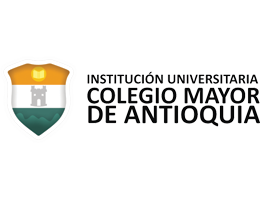EFECTO DE LOS MINERALES TRAZA SOBRE EL RECUENTO DE CÉLULAS SOMÁTICAS EN VACAS HOLSTEIN POST PARTO
Resumen
Antecedentes: Los minerales son elementos químicos simples cuya presencia es indispensable para la actividad celular. Una buena ingesta y absorción de minerales traza es necesaria para obtener una buena respuesta inmune, reproductiva y de crecimiento. Los minerales traza identificados como microminerales son importantes para un desarrollo normal de la función inmune y de la resistencia a las enfermedades dentro de los cuales están el zinc, cobre, manganeso, hierro y selenio, el déficit de uno o varios de estos minerales puede generar inmunodeficiencias en las vacas en producción. Objetivo: Evaluar el efecto de los minerales traza sobre el recuento de células somáticas en vacas Holstein postparto. Métodos: Se evaluaron 86 vacas Holstein las cuales fueron divididas en 2 grupos, un grupo tratamiento de 44 vacas a las cuales se les suministro 2 bolos intrareticulares de minerales traza de liberación lenta, 60 días antes del parto. Y otro grupo no tratadas de 42 vacas, a las cuales se les realizo recuento de células somáticas (RCS) mensuales durante 4 meses con el fin de encontrar diferencias entre ambos grupos. Los resultados de ambos grupos fueron analizados y comparados a través de un análisis estadístico transversal, en el cual las variables cualitativas se presentan como frecuencia absoluta y relativa, las variables cuantitativas se reportaron promedios y su desviación estándar para aquellas con distribución homogénea, aquellas heterogéneas se reportarán medianas con su respectivo rango intercuartílico. Resultados: No se encontró diferencias estadísticamente significativas entre los grupos tratado y el no tratado (p>0.05). Conclusiones: La suplementación con dos bolos de minerales traza intrareticulares de liberación lenta no mostro diferencias estadísticamente significativa en el recuento de células somáticas entre las vacas tratadas y las vacas no tratadas en esta población. La nutrición es fundamental para una buena respuesta inmune, sin embargo, hay que tener en cuenta los factores que influyen en RCS elevados como lo es el medio ambiente, rutina de ordeño, aseo y desinfección de las instalaciones etc. Los cuales deben ser vigilados por un profesional que realice un manejo integral para lograr bajos RCS en el hato.
Citas
Bradley AJ, Leach KA, Breen JE et al. (2007) National intervention study of mastitis control in dairy herds in England and Wales. Vet Rec 160, 287-93.
Burvenich C, Paape MJ, Hill AW et al. (1994) Role of the neutrophil leucocyte in the local and systemic reactions during experimentally induced E. coli mastitis in cows immediately after calving. Vet. Q 16, 45-50.
Chew BP, Hollen LL, Hillers JK et al. (1982) Relationship between vitamin A and β-carotene in blood plasma and milk and mastitis in Holsteins. J Dairy Sci 65, 2111- 2118. Chew BP, Johnston LA (1985) Effects of supplemental vitamin A and β-carotene on mastitis in dairy cows. J Dairy Sci 68 (1),191.
Diplock AT (1981) The role of vitamin E and selenium in the prevention of oxygen- induced tissue damage. In: Selenium in Biology and Medicine. p 303. Spallholz JE, Martin J L and Ganther HE (eds). AVI Publishing, Hartford, CT.
Erskine, R. J., R. J. Eberhart, L. J. Hutchinson, and R. W. Scholz. (1987). Blood selenium concentrations and glutathione peroxidase activities in dairy herds with high and low somatic cell counts. J. Am. Vet. Med Assoc. 190:1417.
Fisher, (2008). Micronutrients and animal nutrition and the link between the application of micronutrients to crops and animal health. Turk. J. Agric. For. 32: 221-233.
Harrison, J. H., D. D. Hannock, and H. R. Conrad. (1984). Vitamin E and selenium forreproduction of the dairy cow. J. Dairy Sci. 67:123.
K. Larry Smith, J. S. Hogan, and W. P. Weiss. (1997). Dietary Vitamin E and Selenium Affect Mastitis and Milk Quality.J. Anim. Sci. 1997. 75:1659–1665
Machado et al. (2015). Efecto de un suplemento de minerales traza inyectable que contiene selenio, cobre, zinc y manganeso en la salud y la producción de vacas Holstein. Vet J. 2013; 197 : 451-456.
Malbe M, Klaassen M, Fang W et al. (1995) Comparisons of selenite and selenium yeast feed supplements on Se-incorporation, mastitis and leucocyte function in Se- deficient dairy cows. Zentralbl Veterinarmed A 42(2),111-21.
Mee JF, O’Farrell K and Rogers PAM (1993). Trace element deficiency in Irish dairy herds. Irish Grassland and Animal Production Association Journal 27,29-40.
Moyo N, Nielen M, Kruitwagen C et al. (2005) Vitamin E supplementation and udder health: A metaanalysis. In: Mastitis in dairy production: Current knowledge and future solutions. Hogeveen H (ed). Pp 159-165.
McKenzie. R.C. Rafferty and G.J. Beckett. (1998). Selenium: an essential element for immune function. Immunol. Today 9:342-345.
NRC (2001). Nutrient Requirements of Dairy Animals, 7th ed. National Research Council/National Academy Press, Washington, DC, USA.
Oldham ER, Eberhart RJ and Muller LD (1991). Effects of supplemental vitamin A and β-carotene during the dry period and early lactation on udder health. J Dairy Sci 74, 3775-3781.
Rice DA, Kennedy S (1988) Assessment of vitamin E, selenium and polyunsaturated fatty acid interactions in the aetiology of disease in the bovine. Proc Nutr Soc 47,177- 184.
Smith, KL, Conrad HR, Amiet BA et al. (1985) Incidence of environmental mastitis as influenced by vitamin E and selenium. Kiel. Milchwirtsch. Forschungsber 37,482.
Smith KL, Harrison JH, Hancock DD et al. (1984) Effect of vitamin E and selenium supplementation on incidence of clinical mastitis and duration of clinical symptoms. J Dairy Sci 67,1293.
Smith KL, Hogan JS and Weiss WP (1997). Dietary Vitamin E and Selenium Affect Mastitis and Milk Quality. J Anim Sci 75,1659-1665. Spain JN, Jones CA, Rapp C et al. (2005) The effect of complexed zinc on keratin synthesis in the teat canal and the establishment and severity of experimentally induced E. coli mastitis in dairy cows. In: Mastitis in dairy production: Current knowledge and future solutions.
Scaletti RW, Trammell DS, Smith BA et al. (2003). Role of Dietary Copper in Enhancing Resistance to Escherichia coli Mastitis. J Dairy Sci 86,1240–1249.
Spain JN, Jones CA, Rapp C et al. (2005). The effect of complexed zinc on keratin synthesis in the teat canal and the establishment and severity of experimentally induced E. coli mastitis in dairy cows. In: Mastitis in dairy production: Current knowledge and future solutions.
Underwood, E.J. (1977). Trace Elements in Human and Animal Nutrition. 4th Edition, Academic Press, New York.
Wilson DJ, Gonzalez RN, Hertl J et al. (2004). Effect of clinical mastitis on the lactation curve: a mixed model estimationusing daily milk weights. J Dairy Sci 87, 2073- 2084.
Zadoks RN (2006). The role of nutrition in udder health. High Plains Dairy Conference, Albuquerque, New Mexico. Pp 115-127.




